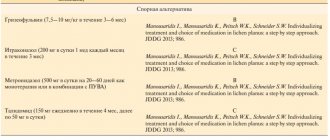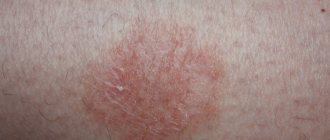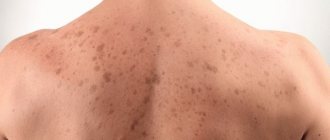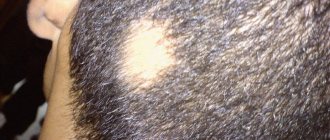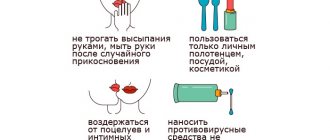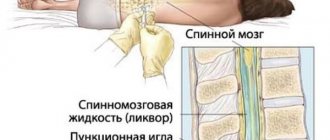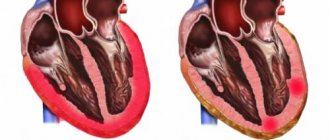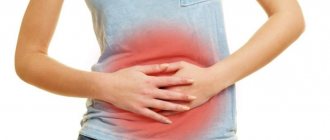Herpes zoster is an extremely unpleasant and fairly common disease of a viral nature. Symptoms of the disease appear in different parts of the body. Usually this is the face, limbs, genitals, lumbar back. Sometimes rashes form on other areas of the skin, but most often on the face. This disease also has signs of damage to the nervous system. In addition to shingles, the causative agent of the disease - varicella zoster - can lead to the appearance of chickenpox in children, as well as adults who have not previously suffered from this disease.
Symptoms of herpes appear in different parts of the body. Usually this is the face, limbs, genitals, lumbar back.
Herpes zoster: causes of the disease
As noted, the appearance of herpes is caused by the Herpesvirus Varicellae virus. The properties of this pathogenic microorganism are similar to the characteristics and characteristics of other representatives of the family of viruses in question.
Firstly, the causative agent of herpes zoster does not tolerate various aggressive external influences well, or does not tolerate them at all. Thus, the virus dies even with short-term (up to 10 minutes) heating, under the influence of ultraviolet rays, disinfectants and special preparations.
Secondly, the causative agent of herpes zoster normally resists cold. Even with repeated freezing, this microorganism does not lose its harmful properties.
Most often, herpes zoster occurs in older people.
The peculiarities of the virus are such that the symptoms of herpes zoster will appear in the patient only if he has previously had chickenpox in its latent or typical form. No epidemic outbreaks of the disease have been recorded - cases of the disease remain exclusively at a sporadic level.
Most often, herpes zoster occurs in elderly patients, but cases of the disease developing in young people are periodically observed.
By its nature, the causative agent of the disease in question is a contagious infection. So, if a child who has not previously had chickenpox comes into contact with a carrier of the virus, after a certain time (usually up to 3 weeks) he will most likely develop chickenpox.
Thus, the shingles virus is a contagious disease and is transmitted by airborne droplets.
The shingles virus is a contagious disease and is transmitted by airborne droplets.
People who have previously had chickenpox retain a certain amount of the causative viruses in their bodies. A confluence of various unfavorable circumstances can lead to their awakening. As a result, inflammation will develop in places where pathogenic microorganisms are localized, with the manifestation of all the symptoms characteristic of this.
Among the key reasons that can lead to the awakening of the dormant herpes zoster pathogen, the following should be noted:
- nervous overstrain;
- deterioration of immunity under the influence of various types of chronic and acute diseases, including HIV and AIDS;
- hypothermia;
- injuries;
- neoplasms in the body, etc.
Briefly about the virus
Before talking about the symptoms and treatment of lumbar lichen, photos of which clearly demonstrate its unpleasant manifestations, the pathogenesis should be studied.
The causative agent of the disease belongs to the herpesvirus family. When the Varicella zoster virus attacks the body for the first time, the consequence is usually typical chickenpox. In the vast majority of cases, people get it at an early age.
After the disease passes, the virus goes into a latent state. It is hidden in the ganglia of the autonomic nervous system, cranial nerves, or in the cells of the dorsal horns of the spinal cord.
The virus may not manifest itself in any way for decades. However, when the prerequisites for the appearance of lumbar lichen arise (they will be discussed later), it leaves the nerve cells and moves along the axons. When the virus reaches the end of a nerve, an infection develops. Where are its manifestations observed? In the place that is innervated by this nerve.
This can happen at any age, but people over 50 are at risk. At this time, patients most often suffer from chronic diseases, the immune system is also weakened, and therefore it becomes easier for the virus to penetrate the blood. Also at risk are people living in poor environmental conditions.
The most dangerous times are spring and autumn. During these seasons, chronic diseases worsen, infections and viruses that are in a latent state are reactivated.
Symptoms of herpes zoster
Herpes zoster has a whole list of severe symptoms. The patient must be able to notice them in a timely manner and seek medical help as quickly as possible, because the sooner the specialist receives all the information he needs during the medical history and examination of the patient, the faster and more effective the treatment will be.
One of the first symptoms of herpes zoster is a deterioration in overall health.
The patient begins to have a headache, weakness appears, the temperature rises to 37...38°C, and chills are often noted.
Signs of dyspeptic disorders may also be added to the symptoms described above. Discomfort, itching, burning and painful feelings often appear in the areas where the rash appears. The reason is that, before manifesting itself on the skin, the virus affects the patient’s nerve endings. Because of this, unpleasant sensations arise.
One of the first symptoms of herpes zoster is a deterioration in overall health.
At a later stage, body temperature rises to 39°C. The patient has symptoms of intoxication. Rashes characteristic of herpes zoster form on different parts of the skin. First, the skin becomes covered with pink spots with an average diameter of 0.5 cm; after a couple of days, groups of bubbles filled with colorless liquid appear on the redness.
As a rule, skin manifestations of the disease are unilateral and most often localized on the face and in the intercostal space.
Sometimes there are cases in which rashes appear in the area of the limbs and genitals.
In parallel with the appearance of rashes, regional lymph nodes enlarge. As their size changes, painful sensations appear.
After a few days, the tone of the rash becomes less bright, and the blisters themselves dry out and crust over. These crusts dry out completely and disappear within a month. The intensity of signs of intoxication decreases with decreasing temperature.
If you do not stop herpes at the initial stage, you will not be able to avoid rashes in the form of blisters with liquid.
The above symptoms are typical for the typical form of shingles, but there may be other options, namely:
- Abortive form: after the appearance of the papule, rapid regression of the rash is noted. In this case, the patient does not go through the bubble stage.
- Bullous form: the vesicles coalesce, resulting in large blisters on the skin.
- Generalized form: vesicles begin to spread throughout the mucous membranes and skin. Most often, this scenario for the development of the disease is typical for HIV-infected patients.
A viral disease affects nerve tissue. Because of this, painful sensations of a paroxysmal nature appear, mainly at night.
As a rule, after the disease subsides, a period of stable remission begins. Relapses are observed in isolated cases.
The viral disease affects not only the skin, but also the nervous tissue. In view of this, the list of symptoms is expanded by the following manifestations:
- painful sensations of a paroxysmal nature, mainly at night;
- impaired skin sensitivity in the affected areas;
- muscle paresis, etc.
Even after shingles goes away, neuralgic pain may persist for a long time.
Even after shingles goes away, neuralgic pain may persist for a long time.
Postherpetic neuralgia (PHN)
When talking about how to treat lumbar lichen (it arose from a cold or as a result of any other ailment that weakened the immune system - it doesn’t matter), it is necessary to make a reservation that PNH appears in 10-15% of patients who have coped with this disease. This disease is not life-threatening, but very painful. PNH prevents a person from working and sleeping, worsens the quality of life, and causes depression. It can last a year or even more.
What's going on? The balance between the anti-pain and pain systems in the body is disrupted, this affects the functioning of the mechanism of control over the excitability of the central nervous system.
A person who is faced with such an unpleasant consequence of lumbar lichen must be prescribed treatment. Nowadays, preference is given to drugs related to anticonvulsants. However, the goal of therapy is to relieve pain and the depression associated with it. Your doctor may prescribe the following medications:
- Antidepressants. Usually this is Amitriptyline and other modern drugs.
- Irritants containing capsaicin. The most popular is “Capsicam”. But it is not prescribed to everyone, only in individual cases.
- Anesthetics - Lidocaine and Benzocaine. They need to be applied directly to the skin.
- Antiepileptic drugs - Pregabalin and Gabapentin.
- Painkillers - Codeine, Ibuprofen, Naproxen.
The most effective anticonvulsants in the fight against PHN are capsaicin, opioid analgesics, lidocaine patches, and tricyclic antidepressants. Modern practice has shown that other means do not give the expected result.
Treatment options for herpes zoster
If you notice any of the above list of symptoms of herpes zoster, try to see a doctor as soon as possible. If you do this within the first three days, all therapy may be limited to the use of antiviral drugs.
To reduce the intensity of pain and eliminate inflammation, the doctor may prescribe NSAID medications.
To reduce the severity of itching, various antihistamines are most often used. If there are symptoms of severe intoxication, detoxification therapy is used with further prescription of diuretics.
To reduce the severity of itching, various antihistamines are most often used.
Only a doctor can prescribe any kind of medications and determine the order of their use. Do not self-medicate, as you risk making the situation worse.
Patients with manifestations of neuralgic lesions are usually prescribed sleeping pills and sedatives, as well as antidepressants. In the active stage of the disease the following are prescribed:
- painkillers and corticosteroids;
- tricyclic antidepressants;
- pain relief patches;
- anticonvulsants;
- opium-based analgesics.
Only a doctor can prescribe any kind of medications and determine the order of their use.
The most commonly prescribed antiherpetic drugs are:
- Acyclovir;
- Famvir;
- Valtrex et al.
In addition to taking prescribed medications, the patient must follow certain rules for caring for rashes.
Drug therapy
The causes, symptoms and photos of lumbar lichen were discussed above. The treatment and its basic principles should also be discussed.
Immediately after the doctor diagnoses the infection, antiviral therapy begins. Severe consequences and serious complications can be avoided if treatment begins in the first three days after the formation of the rash.
The doctor will tell you exactly what medications you will need to take after the examination. But as a rule, the following drugs are prescribed:
- Antiviral: Famciclovir, Vacyclovir and Acyclovir.
- Painkillers: Naproxen, Aspirin, Paracetamol and Ibuprofen.
- Corticosteroids. They are taken only in severe cases, always at the same time as antiviral drugs.
- Local antibiotics in the form of creams for treating rashes: Acyclovir, Alpizarin, Zovirax, as well as heparin ointment, products based on penciclovir and lidocaine.
Therapy can be complex. Usually prescribed are Acyclovir (5 times a day, 0.8 g) and Famciclovir (3 times a day, 0.25 g). The duration of treatment is 7 days. Analgesics and non-steroidal drugs should not be taken for longer than 5-7 days.
Recommendations for caring for rashes
While taking a shower (and doing this if you have herpes zoster is not prohibited), do not rub the rash. If possible, avoid taking baths with aromatic oils and salts.
Development of herpes zoster.
To reduce the severity of pain, you can apply cold to the affected areas, for example, a heating pad with ice. To relieve itching, it is recommended to make lotions with menthol or calamine.
If possible, keep the affected skin areas as unclothed as possible. It is better that contact with clothing is minimized, and contact with air, on the contrary, is maximized.
Do not treat the affected areas with any irritating ointments or creams - this will only make the situation worse.
There is no need to lubricate the rash with brilliant green, iodine and other similar substances - you will recover longer. There will be no effect from topical use of antiviral ointments.
Remember 3 main rules:
- do not panic;
- do not self-medicate;
- consult a doctor promptly.
To reduce the severity of pain, you can apply cold to the affected areas, for example, a heating pad with ice.
Starting the fight against the virus in a timely manner allows you to quickly achieve positive results and prevent the development of complications. It is important that the treatment is carried out under the supervision of an experienced specialist. Otherwise, there is a high probability of developing complications.
Diagnostics
With a detailed clinical picture on the skin, diagnosis is not difficult. Misdiagnoses are possible in the early stages of development during the incubation period. A more accurate diagnosis is made through laboratory tests of secretions: microscopy, serological method, virus isolation on tissue cultures, immunofluorescence, PCR (polymerase chain reaction). Laboratory research methods are carried out in cases of detection of the disease in children with immunodeficiency, in infected infants, as well as in atypical forms of the virus.
Possible complications
The most common complication of herpes zoster is postherpetic neuralgia. Painful sensations along the affected nerves in some cases persist for many years. The likelihood of developing complications increases with age. If in patients under 50 years of age the risk of neuralgia does not exceed 1-2%, then in those over 70 years of age it increases to 25-30%.
In case of damage to the facial nerve, a complication may occur, expressed as rashes on the eyelids, and sometimes even in the cornea. This leads to the appearance of keratitis and other diseases that can cause glaucoma or blindness.
If the facial nerve is damaged, a complication may occur that will lead to the appearance of keratitis and other diseases that can cause glaucoma or blindness.
In isolated cases, the disease is accompanied by deep skin lesions, which leave scars.
The most dangerous complications of herpes zoster are:
- paralysis;
- muscle paresis;
- meningoencephalitis.
Other complications include severe headaches, poor tolerance to bright light, nausea, loss of consciousness, vomiting, and hallucinations.
Herpes zoster can cause complications such as hallucinations.
Is it possible to wash, swim and sunbathe?
Is it possible to wet surfaces infected with the virus? This question worries many sick people, since the disease lasts a long time, and hygiene cannot be neglected with such a disease.
Experts' opinion: patients with herpes zoster should prefer a shower to a bath, steam bath, pool and sea. But sometimes it is contraindicated, since there is a risk of spreading infection throughout the body with water.
In this case, wet wipes can help out, reducing the risk of infection spreading from diseased areas to healthy ones.
Options for preventing herpes zoster
Viruses “love” people with weakened immune systems. To avoid this kind of disease, you must first of all work on strengthening the body’s protective functions. In general, prevention comes down to:
- healthy lifestyle;
- giving up any kind of bad habits;
- nutritious, regular and balanced nutrition;
- hardening;
- regular physical activity within reasonable limits;
- limiting exposure to the open sun.
The psychological state of the patient is no less important. To minimize the risk of shingles, try to always be in a good mood, avoid stressful situations or learn to cope with them without “nerves,” engage in auto-training and work on strengthening your psychological health in general.
Otherwise, follow your doctor’s recommendations, promptly respond to any kind of suspicious changes in your body and be healthy!
How to treat women during pregnancy and breastfeeding
In pregnant women, shingles is very rare, unlike simple herpes, which quite often disturbs the peace of expectant mothers.
Why does herpes zoster appear? As a rule, due to weakened immunity - with HIV and other diseases associated with immunodeficiency.
To overcome the virus, it is important to correctly recognize it; for this, various tests are carried out (including immunoglobulin), and the PCR method is used to identify the causative agent of the infection using samples from vesicular fluid, saliva, and urine.
If the disease is left without proper treatment, there is a danger for the unborn child - a negative effect on the fetus can cause chromosomal abnormalities in newborns.
The doctor selects treatment for each patient individually - the drug itself, its dose, and duration of use are selected taking into account the severity of the problem and the characteristics of the female body.
The same principles are followed when it comes to the health of a nursing mother.
About the features of herpes zoster in children and pregnant women in the following video:
Medicines
Photo: newshd.net
The drug therapy regimen for herpes zoster includes the following medications:
- Antiviral medications . Acyclovir is the basis of treatment and is effective in the initial stages of the disease. It is administered intravenously in a mixture with an isotonic solution. Sometimes used in tablets. The duration of the course is 5 days.
- Diuretics . Furosemide in tablets is necessary mainly for severe forms; it is used to remove excess fluid and reduce swelling.
- Symptomatic drugs . Patients are prescribed restorative and antipyretic drugs. For sleep disorders, the regimen includes medications with sedative and hypnotic effects. Antidepressants are sometimes used.
It is not an easy task to eliminate pain, which, due to its neurological nature, is highly intense and is poorly relieved by analgesics. NSAIDs, paracetamol, aspirin are prescribed; for severe pain, narcotic analgesics are administered; if indicated, central analgesia is administered using anticonvulsants.
To enhance the anti-pain effect, corticosteroids are added to antiviral drugs. For debilitating pain that is resistant to other medications, epidural blockades are performed with a mixture of methylprednisolone and local anesthetic.
The causative agent of infection
The causative agent of shingles is the varicella-zoster virus (Varicella-Zoster), which, after entering the human body, causes the development of the well-known chickenpox.
The disease is diagnosed extremely rarely. According to numerous studies, shingles on the face occurs in 15 cases out of 100 thousand. Despite the low prevalence, the disease has a recurrent course and can be accompanied by negative consequences.
Most often, shingles on the face appears in the winter season at low temperatures. There is also an age factor: the highest incidence is observed among people in middle and old age.
Reviews
Oleg Sh.: “I was very cold while hunting. I feel like my whole body hurts, I thought it was a common cold, but it turned out to be herpes zoster. Fortunately, the doctor immediately correctly assessed the situation and prescribed me treatment. It’s hard to say how many tubes of Zovirax I spent, but I recovered quickly.”
Lilia R.: “In a teenager, I heard that the disease is not very severe. This is what happened to my son - well, his body itches, he feels uncomfortable, embarrassed in front of his friends, that he’s covered in sores... This, by the way, is not so scary. But the doctor is worried about the immune system and recommended how to strengthen it - the virus is recurrent, and new problems may turn out to be more serious than the old ones.”
Irina K.: “I had shingles twice, both times due to nervousness. Iodinol helped me well, my doctor advised me to make compresses with it. I did without injections or physical procedures.”
Atypical forms
The typical course of herpes zoster is described above. Sometimes the disease gives an atypical clinical picture:
- Abortive form - there is no stage of formation of watery vesicles. Despite the absence of a skin rash, the pain is just as intense.
- Bullous form - vesicles increasing in size merge, forming bubbles of large diameter.
- Hemorrhagic form - deep tissue destruction with damage to the skin capillaries leads to the filling of the blisters with blood. Healing occurs with the formation of scars and dimples on the skin.
- Gangrenous form - deep ulcers form in place of the vesicles. Healing is delayed, and eventually rough scars form in their place.
